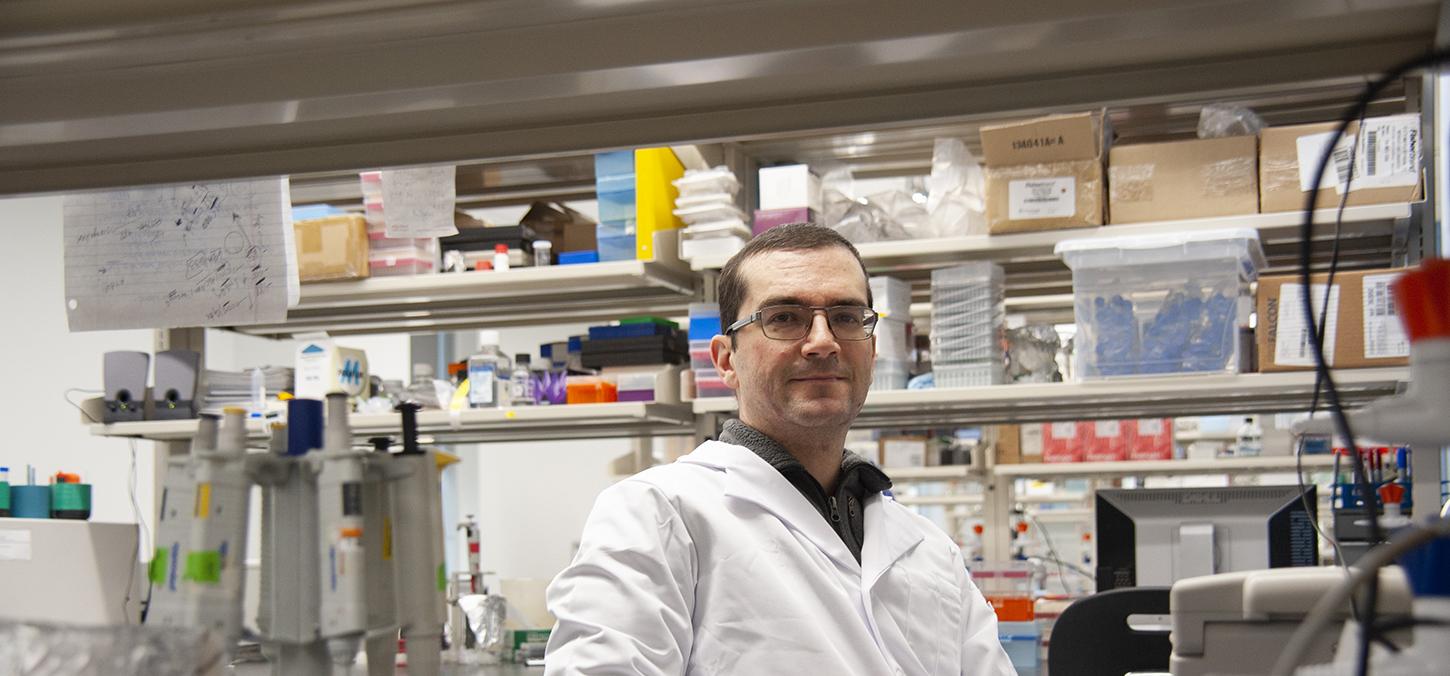
Could simply-adapted technology provide a rapid, low cost alternative for COVID-19 detection?
A simple mouth swab and rinse with testing technology adapted from a common viral detection method, the pap smear, could provide an easy, low cost and rapid diagnostic tool for COVID-19 infections, says Michael Glogauer, professor at the Faculty of Dentistry and head of dental oncology at Princess Margaret Cancer Centre. Glogauer, along with partners at Sunnybrook Health Sciences Centre, North York General Hospital, Sinai Health Systems and UHN’s Princess Margaret Cancer Centre, has been given permission by the University of Toronto to research the viability of the platform.
Recently, Canada has launched a number of detection platforms to help with the fight against COVID-19, including a new platform developed by a U of T alumnus. Some detection methods, like the Spartan Portable Cube, require specialized technology and laboratory equipment. Others, like the common nasopharyngeal swab method, utilize certain chemicals for testing, of which currently are in global short supply.
Most testing sites, Glogauer points out, miss the mouth.
Mouths more accessible
Increasingly, evidence suggests that the mouth is an ideal site for taking samples for COVID-19 testing – although few testing methods do. SARS-CoV-2, the virus that causes COVID-19 infections, invades epithelial cells, such as those lining the lungs.
But these epithelial cells are also prevalent in large numbers in the mouth, and especially on the tongue, where respiratory droplets are expelled. COVID-19 binds to the body’s epithelial cells through ACE-2 receptors.
And, as Glogauer notes, “It just so happens that the tongue expresses extremely high levels of ACE-2 receptors.”
That makes the mouth, which is also one of the most easily accessible sites on the body —requiring no needles, and unlike the nose, causing no pain when swabbed — an ideal place from which to cull samples.
“The tongue is a big net. It will always be positive if an infection is present,” says Glogauer.
But it’s a testing platform already in use which could make a significant difference in making testing widely available around the world: the pap smear.
“The tongue is a big net. It will always be positive if an infection is present.”
Adapting simple tests
The common denominator between pap smears and the novel coronavirus is epithelial cells.
“Pap smears show viral changes and inflammation in epithelial cells,” Glogauer explains, exactly what technicians are on the hunt for with COVID-19.
Common to women the world over, the test is also routine and simple: epithelial cells are scraped, mounted onto slides, stained and viewed under a microscope. The cost? Approximately $30 per test.
Glogauer also notes that laboratories around the country could rapidly mobilize to this testing platform.
“All labs are set up to do pap smears,” he says.
The process of adapting the test would be virtually painless, too: samples could be easily collected by giving subjects an oral rinse and brushing their tongue. Results can be returned in a matter of hours.
Importantly, the smear test could represent an easy ally for COVID-19 detection in developing nations, where lab technology is limited.
“If it works it will be a real game changer for everyone,” says Glogauer.
Still, Glogauer cautions that the technology needs to be fine-tuned to be able to weed out false positives – currently, the test will indicate other forms of viral infection, as well. But as a fast and relatively inexpensive tool in the arsenal to find and detect COVID-19?
“Ideally, you want different testing modalities,” says Glogauer. “This could be one of them.”
Photo: professor Michael Glogauer (Jeff Comber)